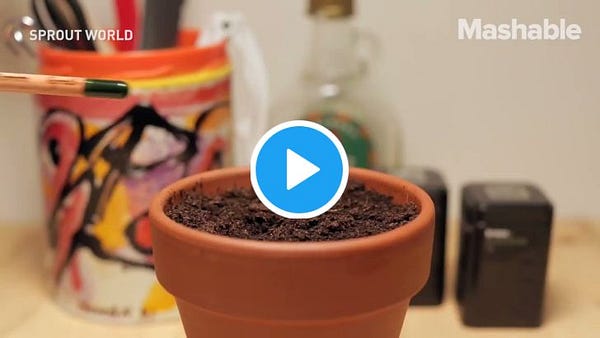5/7/20 - smart, useful, science stuff about COVID-19
SCIENCE:
1) A 5/7/20 story by Smriti Mallapaty for Nature explores the questions surrounding the role of children in spreading the new coronavirus. At this point, researchers disagree even on whether the source of children’s lower infection rate is a result of their biology or a result of their limited exposure to infected people. Mallapaty reports on some intriguing but preliminary findings that suggest children are not strong vectors for this virus. Once infected, however, it’s clear that most children do not get severe or fatal COVID-19. Theories for milder symptoms include that children’s lungs may have fewer of the type of complex molecules (proteins called ACE2 receptors) the virus uses to enter our cells. Or their ACE2 receptors might be immature. The story also raises a larger question about the infectiousness of high concentrations of the virus’s genetic material (RNA): https://www.nature.com/articles/d41586-020-01354-0.
2) A 5/1/20 story by Lisa M. Jarvis in Chemical & Engineering News reports on a consortium of pharmaceutical companies that is sharing resources and data (e.g. genes, structural information on molecules, computational methods, software, collections of compounds, and even chemists) to develop vaccines, antibody treatments, and antiviral drugs for not just this coronavirus pandemic but also future coronavirus outbreaks, which are likely. A company's research head is quoted in the story as saying, “We all came together and started to discuss: What are our strengths, and how could we put together a virtual drug discovery pipeline by drawing from the strengths of each one of these individual organizations and recognize what we can do?”: https://cen.acs.org/biological-chemistry/infectious-disease/How-big-pharma-firms-quietly-collaborating-on-new-coronavirus-antivirals/98/i18.
3) The results of a handful of new peer-reviewed studies with COVID-19 patients now "do not suggest that continued use of ACE (angiotensin-converting enzyme) inhibitors and ARBs (angiotensin-receptor blockers) causes harm,” reports Sue Hughes for MD Edge (5/6/20): https://www.mdedge.com/infectiousdisease/article/221811/hypertension/new-angiotensin-studies-covid-19-give-more-reassurance. The finding is important because SARS-CoV-2 enters our cells through an ACE receptor and many people take ACE inhibitor drugs to control high blood-pressure.
4) Dangerous blood clotting issues are linked to diseases and microbes beyond COVID-19 and the new coronavirus, reports Roxanne Khamsi for Wired (5/7/20). These diseases and bugs include typhoid fever, SARS, MERS, and the bacteria H. pylori (which are responsible for stomach ulcers) and E. coli (often harmless but some strains cause food poisoning, gastro-intestinal infections, pneumonia, and more). The story also describes questions surrounding how COVID-19 causes clots. And it notes some unusual observations: some COVID-19 patients on blood thinners nonetheless develop clots: https://www.wired.com/story/covid-19s-scary-blood-clots-arent-that-surprising/.
HEALTH CARE:
5) An editorial in the journal JAMA Dermatology calls for dermatologists to start reporting and describing any skin symptoms, rashes and skin eruptions that they see associated with COVID-19, reports Ted Bosworth for MD Edge (5/5/20). It’s unclear if the new coronavirus or disease causes these skin conditions, the story states, but they do seem to be linked to problems with blood vessels: https://www.mdedge.com/infectiousdisease/article/221703/coronavirus-updates/case-reports-illustrate-heterogeneity-skin?channel=63993.
EPIDEMIOLOGY (study of epidemics):
6) “The coronavirus outbreak in New York City became the primary source of infections around the United States, researchers have found,” reads the sub-headline/teaser of a 5/7/20 story by Benedict Carey and James Glanz in The New York Times. Genetic tracking of small mutations in the virus taken from infected people suggests that travelers from the city seeded outbreaks around the country in early March, the story states, but this is no longer the case now that infections have spread throughout the country. New York played the same role last month in the U.S. as Wuhan did in China and as Milan did in Italy earlier this year, according to the story. Seattle also played a role in the U.S. in seeding infections nationally. I am reading quickly but I don’t see where/if this research was published: https://www.nytimes.com/2020/05/07/us/new-york-city-coronavirus-outbreak.html.
ENTERTAINMENT:
7) “I will judge you by your bookshelf”:



.
8) If you can’t find seeds for your victory garden:
————
BUY ME SOME ICE CREAM: Please consider a contribution of $5, $10, or $15 etc. to support my work making this newsletter: https://www.patreon.com/robinlloyd. Or use PayPal (robinlloyd99 at aol) or GooglePay (robinmlloyd at). Thanks to my patrons!
ABOUT THE PUBLISHING INDUSTRY: A lot of content is free during the pandemic, as a public service, but publishing, like many industries, is struggling. If you have the means, please subscribe to or purchase worthy publications.
TAG ME: Please send questions and good pieces about COVID-19 that you’ve seen, written, produced. And alert me about mistakes.
RESOURCES, WEEKLY HIGHLIGHTS, ARCHIVE TO 3/11/20
Love/In friendship, Robin



